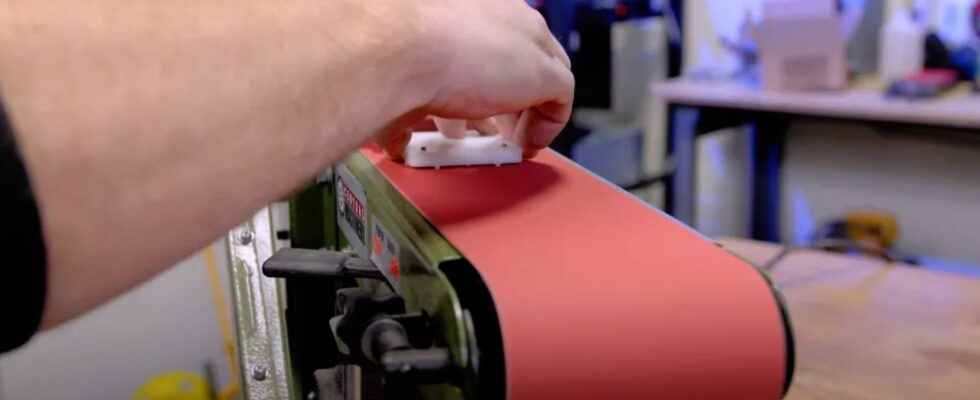Counter the heat on the new processors AMD Ryzen 7000 gives rise to strange initiatives… and yet convincing. By sanding (meticulously) its Ryzen 9 7950Xa YouTuber managed to effectively reduce his temperatures.
You may have noticed that Ryzen 7000 processors are equipped with an IHS (Integrated Heat Spreader) somewhat atypical. The latter is indeed illustrated by its baroque shape and its copious thickness of 3.6 mm. A chunky design adopted by AMD to allow compatibility of these new processors with the cooling systems originally designed for Zen 4 CPUs.
Reduce IHS thickness to reduce temperatures
The fact remains that if this thickness starts from a good intention, it has a direct impact on the dissipation capacities of the Ryzen 7000 processors… and therefore on their temperatures. Something to give some ideas. We thus learned a few weeks ago that removing the IHS from the latest AMD processors allowed a Ryzen 9 7900X to lose almost 20 degrees. This manipulation delicious “) turns out to be risky, but not much more than the one we brought back this weekend Tom’s Hardware.
To reduce the temperatures of the same processor, YouTuber JayzTwoCents for his part ventured to simply sand the IHS to drastically reduce its thickness. To do this, the interested party equipped himself with a grinding tool, a protective support for the processor and a dose of elbow grease.
To ensure that the surface of the IHS remained perfectly flat, the videographer then engaged in a finishing hand sanding, while ensuring that all copper residue had been removed and that the surface sanded from the IHS was perfectly cleaned. An imperative check before mounting on a motherboard.
A clearly visible result
Although delicate, the operation paid off, significantly reducing the temperatures observed under load on the Ryzen 9 7950X. With a 0.8mm thinner IHS, the chip lost at least 6 degrees in this case, going from 94-95 degrees before sanding, to a maximum of 85-88 degrees depending on the thermal paste used. The frequency was then maintained at 5.1 GHz on all cores. By going to 5.4 GHz on all the cores, the temperature rose this time to 90.6 degrees “only”.
Still, the operation has two major drawbacks: by reducing the thickness of its IHS, the target processor is no longer compatible with AMD’s old Zen 4 dissipation systems; and it is obviously impossible to hope to make the guarantee work after such a planing…
Source : Tom’s Hardware

28